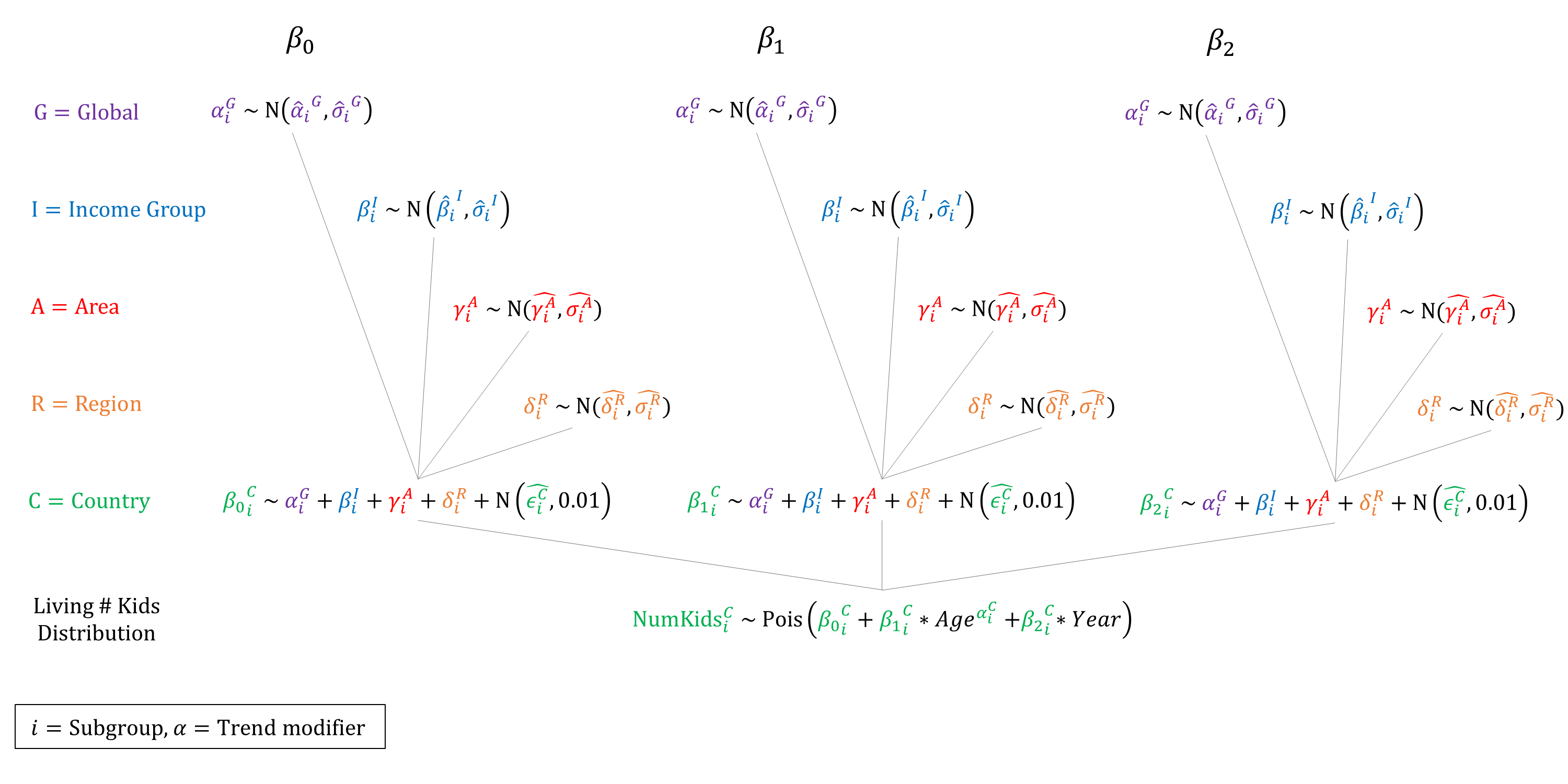Number of Living Children
Model Inputs \(\rightarrow\) Family Planning Parameters \(\rightarrow\) Number of Living Children
Overview
At the beginning of the model, women are initialized with a number of living children who were born before the analytic timeframe begins. Modelling the number of existing children that women have at the start of the model allows for family planning preferences for ‘limiting’ or ‘spacing’ to be more appropriately captured.
Data
We estimated the number of living children based on DHS data. We restricted our analysis to women who were sexually active (i.e. past age of sexual debut). Data were available for 3,046,522 women from 230 surveys in 71 countries.
Parameters
We assumed that the number of living children follows a Poisson distribution. We fit hierarchical models to estimate the mean number of children by age and year, stratified by subgroup (urban/rural and level of education). We used upper middle income priors for high income countries due to lack of DHS data in high income countries.

Priors
Model Implementation
Given the parameters described above (intercept, age, year), the mean number of living children \(\lambda_w\) is predicted for each woman who has been sexually active for at least 9 months in 1985 (cycle 0). Her number of children is then drawn from a Poisson distribution: \(\text{Pois}(\lambda_w)\). The sex of each child is assigned randomly (50% male), and the current age of each child is drawn uniformly at random based on the interval between the mother’s age at sexual debut (plus 9 months) and her current age.
GMatH (Global Maternal Health) Model - Last updated: 28 November 2022
© Copyright 2020-2022 Zachary J. Ward
zward@hsph.harvard.edu